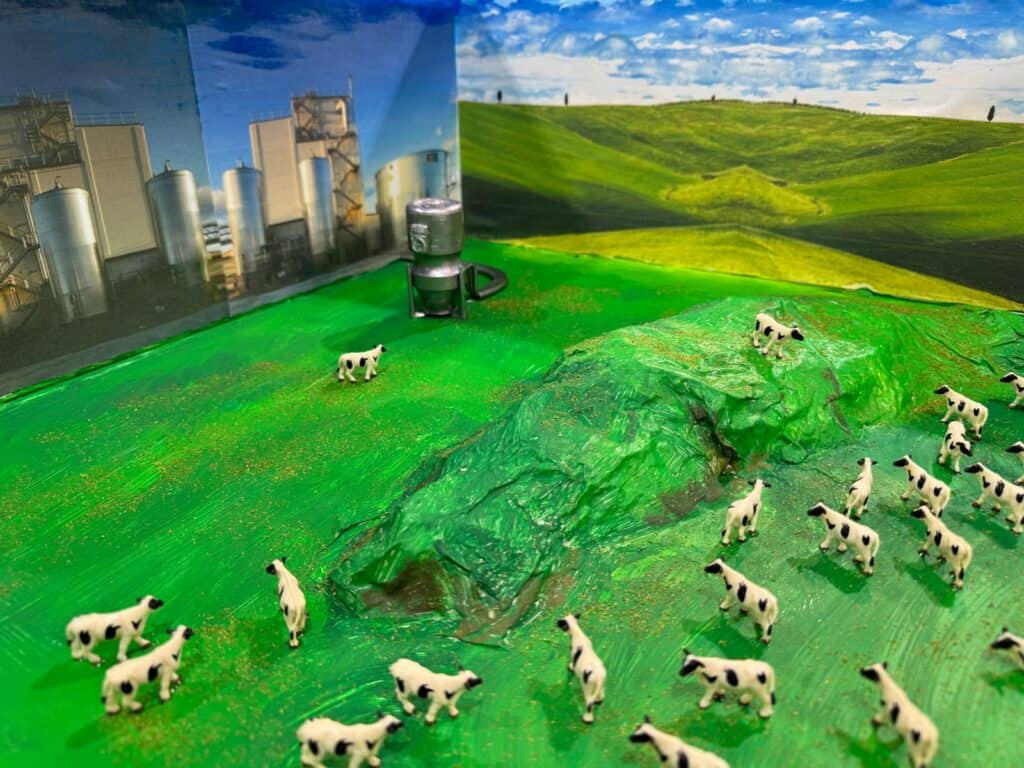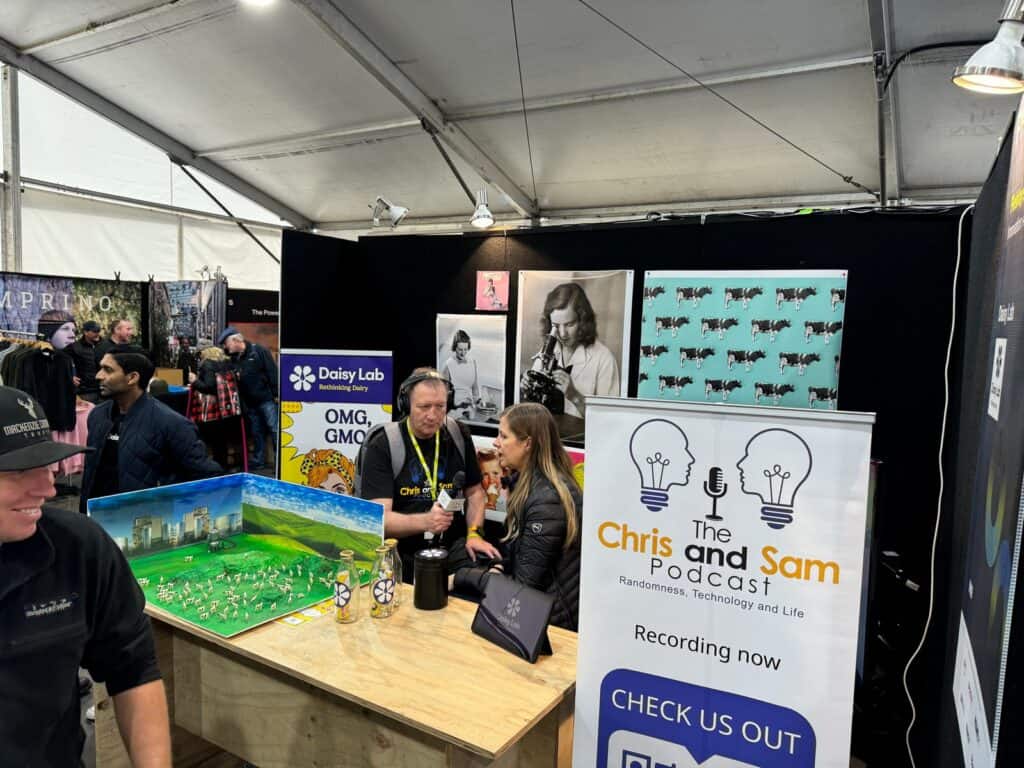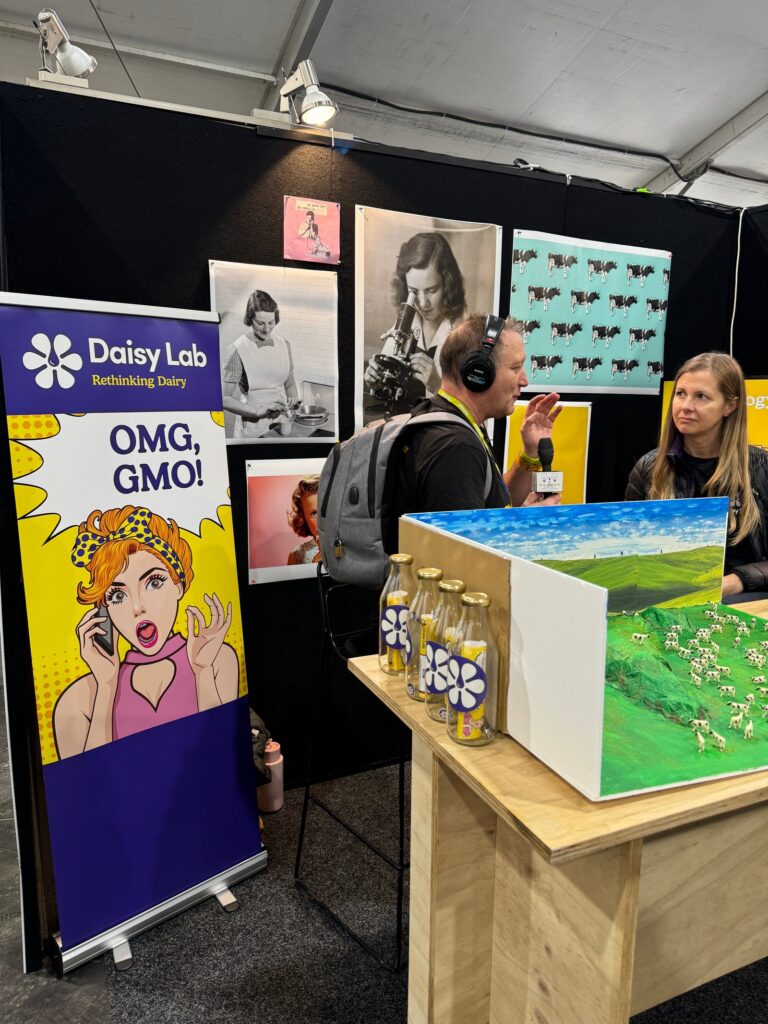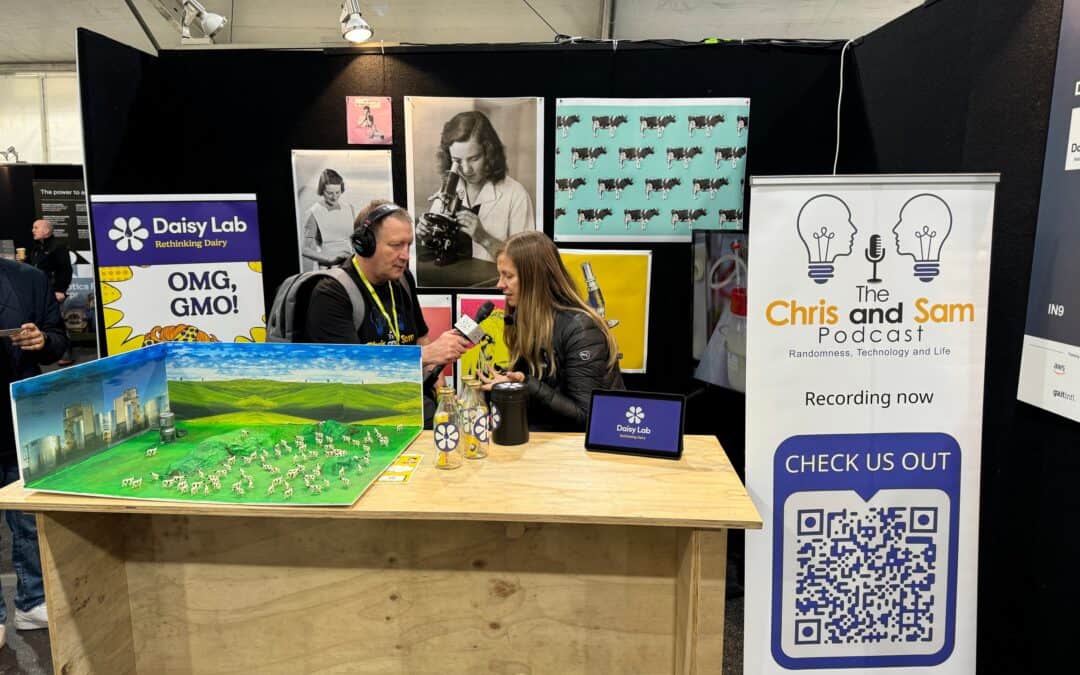Summary
Chris talks to Irina from Daisy Lab. A company that is perfecting precision fermentation.
Allowing them to create identical dairy proteins like whey proteins, caseins and lactoferrins without any cows.
Listen to find out about this fascinating technology and what it could mean in the future.
Links
Photos



Show Transcript
This transcript was generated by an AI and may not be 100% accurate. If you have questions about any of the information found here, please reach out to us.
Chris [00:00:21]:
Okay. So we’re still here in field day’s innovation tent, and I’m here with Irina with, Daisy.
Irina [00:00:29]:
Daisy Lab. Yes. So my name is Irina Miller. I’m cofounder and CEO of Daisy Lab.
Chris [00:00:35]:
Right. So Daisy Lab, you got this great little, diorama here with a bunch of cows, but tell us what Daisy Lab is all about and why you have got a prototype here at Field Daisy.
Irina [00:00:47]:
Right. So Daisy Lab, at Daisy Lab, we have developed the technology that allows us to make dairy identical proteins, like whey proteins, caseins, lactoferrins without any cows. So we make individual proteins using yeast and the process of fermentation.
Chris [00:01:06]:
Okay. So what is the use case for that? Why do we need that separated out from, the dairy industry as it were?
Irina [00:01:18]:
Well, it it’s an ingredient. So currently, The say, if you talk about whey protein isolate, it’s used in a variety of different applications in some of the end consumer products like ice creams and yogurts and soft cheeses. It’s also used on its own just like a whey protein isolate.
Chris [00:01:38]:
Right. So and the benefit is, I assume, is is environmentally more sound than than farming. So how far away or how far down the track of the prototype from idea to actualization, commercialization? How far down that journey are you now?
Irina [00:01:55]:
So, yes, to answer your first question, yes, you’re absolutely correct. It’s the environmental benefits that we are chasing. And unfortunately, your listeners cannot see the diorama, but it shows clearly that the small fermented can replace quite a lot of cows. How far down the track we are? Well, about a year ago, we knew we had the protein because chemical reaction showed us we had a protein, but it was such small quantity we couldn’t purify it, taste it, touch it, smell it, make any products out of it. We’re now at a point where we have made prototype products. We have had tasting events and had very good feedback. So we can make enough protein to kind of play with, and it’s tangible, but nowhere near enough to get it onto supermarket shelves. So our next stage in our development is we wanna build a 1000 liter fermenter and a pilot downstream processing line, which would be like a mini dairy plant.
Irina [00:02:52]:
And from there on, our goal is actually selling the technology. So we wanna sell the IP, our strains and fermentation protocols, and most likely to the existing dairy processors because they already have 80% of capital expenditure, 80% of equipment that’s needed for this technology to take place because they can just use the existing processing equipment to purify our microbial whey.
Chris [00:03:21]:
Yeah. Okay. So, yeah, that makes a commercialization The makes way more sense to me to to to do through the existing, if you like, distribution channel, how they already do it. And we will get a photo of the diorama and make sure we got that in the show notes, so if you’re listening to this check out the show notes. When you said that you found the, the protein about a year ago, how much searching did you have to do to get to that, and what was the thought process before? Was that always what you’re looking for? Or often, I have talked to people, and they end up stuck looking for something else and stumbling across this and go, oh, we’ll we’ll pivot to that. So how’d that how’d that come across?
Irina [00:04:04]:
Rather than rather than searching, it was probably more the process of convincing the yeast of to produce the protein that we wanted to produce because we take the DNA from the cow. And we kinda trying to explain to yeast what to do with it, and then at a certain point it and, and then goes, oh, yeah. I completely get it, and I’m just gonna make it part of my genome and just live with it and go about my life and eat sugars and reproduce as part of my life cycle I’m gonna produce this protein and and secrete it out just like mammalian cells do in a cow’s udder. So that process took a while. The was probably another 12 months leading up to it. And, we actually did start with a different protein. We started with caseins, and we can produce caseins and yeast as well.
Irina [00:04:50]:
However, The purification, and, the purification process for caseins is a lot more complicated and expensive. And we just where we at, we don’t see this process scaling as well as the whey protein that we’ve scaled.
Chris [00:05:06]:
And and it’s just occurred to me, the whey protein, that that, the fitness market whey protein is huge. Is this something that you’d use in that sort of thing?
Irina [00:05:17]:
Yeah. Absolutely. It can absolutely be used for, for sports nutrition. And, of course, the x factor for this ingredient would be that it is, dairy identical. So it’s animal identical, but it is animal free. So it is, ethically can be labeled as vegan, but it has all the nutrition, of dairy.
Chris [00:05:38]:
Yeah. Because it comes from yeast. So I I don’t eat meat. So I appreciate that. Okay. Cool. Now what should I have asked you that I haven’t asked you? That’s always a good question.
Irina [00:05:49]:
I think that was really comprehensive. So yeah.
Chris [00:05:52]:
Okay. So where can people find out more about Daisy Labs?
Irina [00:05:57]:
So Daisy Labs got a website, www.daisylike a flower, lab like a lab laboratory, dot co dot NZ. But we also have, social channels, and we would really appreciate your support. So it’s DaisylabNZ for Instagram, and I think it’s the same for TikTok.
Chris [00:06:16]:
Yep. I’m sure we’ll find I’m sure we’ll find it, and we’ll have those links in the show notes. We’ll we’ll put those in as well. Okay. Thank you so much, Irina, for for talking to me today, and good luck with the rest of field days.
Irina [00:06:26]:
Thank you very much.
Chris [00:06:27]:
Oh, actually, before you go, I do have a couple of questions that we’re asking everybody. Do you normally listen to podcasts? Sometimes. Do you have a favorite? Okay. And the other question is and and this may or may not well, I’ve had some interesting answers already. AI The the big thing at the moment. Did it in any way impact what you were doing here?
Irina [00:06:48]:
Not directly. We write some press chris releases with AI and and whatnot. We definitely use so AI is such a broad term. We absolutely use machine learning for analyzing some of our fermentation optimization data. So you could say that’s AI. It’s it’s not new age AI that is super interactive and and user friendly. It’s probably a bit more of a, you know, a decade or and old. Yeah.
Irina [00:07:16]:
But, of course, AI is everywhere, and we’d be foolish not to use it.
Chris [00:07:21]:
No. That’s cool. I just thought we’re adding that question in this year. Thanks very much, Irina.
Be Social with Us
Support us on Patreon
The Chris and Sam Podcast Facebook Page
Visit us on Instagram
The Chris and Sam Podcast Twitter Feed
Chris’s Website
Sam’s Website

